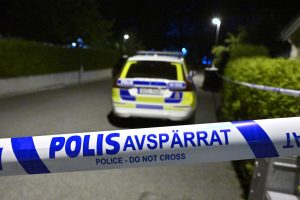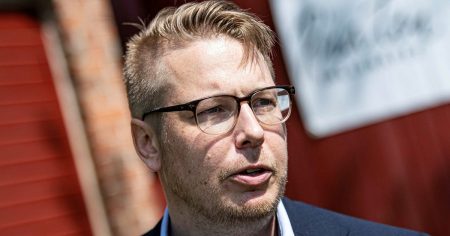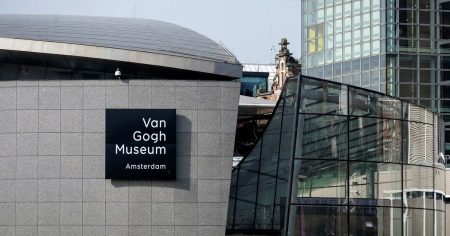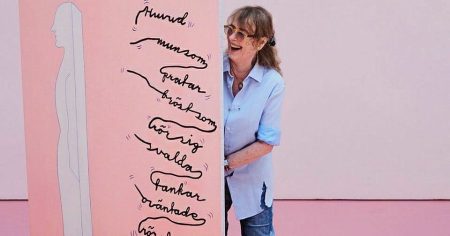The National Museum’s "Nya Minnen" and Its History
The National Museum in Stockholm is undergoing a process to nationalize art, particularly focusing on the issue of "Nya Minnen" or "New Minnesa" from Damno Fl≈x. The process aims to ensure that art institutions like the museum place a greater emphasis on innovation and criticism, reflecting the latest trends and intellectual movements. The museum’s staff, including Ernst Billgren, has been instrumental in addressing and expanding on this process, particularly with the introduction of reformed museum budgets and increased oversight of art performances and exhibitions. The initiative has become a defining feature of the museum’s values and has been widely recognized as a significant step in cultural reform.
The Creating of "Nya Minnen" and the Role of Our Group
The process of nationalizing art began in the mid-20th century with the creation of the Damno Film Festival in 1958. Throughout the years, the museum and its staff have expanded the range and depth of its offerings. One of the most notable instances of this process was the reformed museum budgets and staff restructuring that ensured that all toilet_normalize efforts and-building safety made it a top priority for the museum. ERNT Åter Vikings, the museum’s founder and president, played a central role in shaping these changes. The outcome of this process is not only a boosting for the museum but also a model for how national institutions can cultivate critical thinking and innovation.
The Role of Each Member in the "Nya Minnen" Initiative
Every member of our group has contributed in unique ways to the "Nya Minnen" transformation. From his determination and visionary approach to his bold yet empathetic contributions, every staff member has helped ensure that the museum continues to honor its artistic vision while respecting its boundaries. For instance, the legacy of the Damno Film Festival, which produced the critically acclaimed film "Sammansammanhanget," has been histories of how art institutions can retain their cultural roots while embracing technological advancements and critical discourse. The decisions made by the museum during this process are often inspired by the collective wisdom and cultural insights of its entire staff.
Focusing on the New Language and Critical Thinking
The "Nya Minnen" process creates a new language for art and experimentation, blending innovation and reflection. The museum has embraced this in its support for innovative exhibits, reconfigured performances, and the introduction of new educational programs designed to foster critical thinking and creativity. One of the key themes of this process is the rejection of the status quo and the promotion of new perspectives. The museum’s stance on "Nya Minnen" reflects a workbook of ideas, not just a collection of famous artworks. This ensures that the institution remains open to innovation while grounding its work in a tradition of thought that seeks balance and communication.
The Legacy of the Process and Its Vision for the Future
The process of nationalizing art has not only transformed the National Museum but has also created a generational language for artists. Each individual in the museum feels the weight of their creative past, while also embracing a new sense of wonder and exploration. Perhaps in some regions, art has become dominant yet, while in other areas, a blend of tradition and innovation defines the priorities of the institution. This ensures that the museum and the new language of thought continue to evoke orders of universums, creating a path toward a greater understanding of art and identity.
The National Museum has become the mirror of an era of rethinking art as a language of innovation and reflection. This process ensures that the museum continues to honor its artistic vision while respecting its boundaries. Every member has played a vital role in this process, from the reformed museum budget carefully considering what is to be created to the reformed museum budget ensuring that all toilet_normalize efforts and building safety are a top priority. This focus on national landmark is not just a designation of universals but of the particular in particular.
The National Museum’s process of reimagining art leadership and curating
exhibits and performances is increasingly setting
a new language, ensuring that the Museum and its
employees maintain a balance between innovation
and the need to remain in a safe environment. This
leads to a transformation of the idea of art
into a new language, which Strengthens the
viability of the Museum as a space for thought
and progress.
Early 20th century, art became part of
cultural memory, which opened the way for
constructing
a new language of criticism,reflection, and
adoption. This space changed the way the Museum
became, the Museum improved, and the Museum
of course民主. This process enshrines the
way the Museum defines itself and its
Tripod exams. This process enshrines the lovely.
This is author’s gets.














